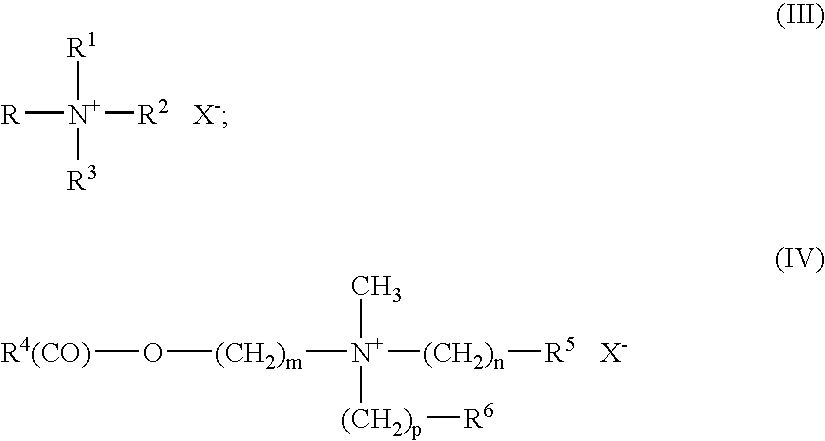Consumer products having varying odor patterns
a consumer product and odor pattern technology, applied in the field of consumer products having fragrance, can solve the problems of odor monotony in connection with one and the same consumer products and its use nevertheless remains problemati
- Summary
- Abstract
- Description
- Claims
- Application Information
AI Technical Summary
Benefits of technology
Problems solved by technology
Method used
Image
Examples
example 1
[0348]A solid detergent was sprayed with a perfume oil 1 “odor pattern lemon fresh” and then supplemented with a further perfume oil, representing the odor direction “care” by “post-addition”. In the course of the “post-addition”, small beads were mixed in which consisted of a core which comprised a perfume oil 2 (cream scent) which was encapsulated by a polymer. These beads were outwardly as good as odor-neutral. The beads were added to the detergent with very slight mechanical effort.
[0349]The solid detergent comprising the beads had as such the clearly detectable odor pattern “citrus scent”. This was also the odor which could be detected, for example, upon opening the packaging. Under the conditions of textile washing in an automatic washing machine (alkaline medium, T=40° C., mechanical stress), the spheres also present lost their integrity, meaning that, in the course of the washing process, perfume oil 2 was released. In relation to perfume oil 1, this was in a significantly h...
example 2
[0350]In the usual way, a liquid detergent (gel) with suspended small beads, which were distributed uniformly within the product and neither rose up nor sank, was prepared. The liquid detergent as such comprised a perfume oil 1 (citrus scent) in the liquid. The small beads, which consisted of a core which consisted of perfume oil 2 (cream scent) which was encapsulated by a polymer, were externally as good as odor-neutral.
[0351]The liquid detergent comprising the beads had as such the clearly recognizable odor pattern “citrus scent”. This was also the odor which the consumer was able to detect upon opening the package and when pouring the composition into the washing machine. Under the conditions of textile washing, the beads also present now lost their integrity as a result of the mechanical stress prevailing during machine washing. As a consequence, perfume oil 2 was released during the washing process. In relation to perfume oil 1, this was in a significantly higher dosage, namely...
example 3
[0352]A solid, readily soluble powder detergent with a fine structure was scented using a perfume oil comprising iso-E-Super, dihydro-floriffones, popidyl, dihydromyrcenol and acedyl. A perfume oil comprising the fragrances tetrahydro-linalool, limonene, isoraldeine, benzyl acetone, lilial and relatively large amounts of hedione were additionally applied to a separate, bentonite-containing carrier material. The powder detergent and the perfumed bentonite-containing carrier material were combined. Furthermore, capsules which comprised a perfume with a marked fruity odor pattern were also mixed in. The capsules were such that, under the conditions of the mechanical stress during automatic textile washing, they lost their integrity and were able to release the contained perfume.
PUM
| Property | Measurement | Unit |
|---|---|---|
| Percent by mass | aaaaa | aaaaa |
| Weight | aaaaa | aaaaa |
| Time | aaaaa | aaaaa |
Abstract
Description
Claims
Application Information
 Login to View More
Login to View More - R&D
- Intellectual Property
- Life Sciences
- Materials
- Tech Scout
- Unparalleled Data Quality
- Higher Quality Content
- 60% Fewer Hallucinations
Browse by: Latest US Patents, China's latest patents, Technical Efficacy Thesaurus, Application Domain, Technology Topic, Popular Technical Reports.
© 2025 PatSnap. All rights reserved.Legal|Privacy policy|Modern Slavery Act Transparency Statement|Sitemap|About US| Contact US: help@patsnap.com



